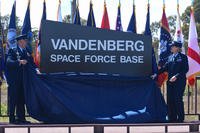HAGATNA, Guam -- Motor transport Marines with Combat Logistics Detachment 39 helped bring relic military vehicles back to life Feb. 27 at the Pacific War Museum.
The Marines were informed of the need for restoration help at the museum and jumped at the opportunity to volunteer and provide maintenance.
The Marines used their expertise on current Marine Corps vehicles and maintenance to repair and restore Marine Corps equipment from World War II and the Korean and Vietnam Wars, according to Staff Sgt. Michael J. Madieros, the motor transport maintenance chief for CLD-39, 3rd Marine Logistics Group, III Marine Expeditionary Force.
Roy Moore, a volunteer at the museum, got in touch with the Marines, who are on Guam for Exercise Shield, to see if they could assist him with restoring the vehicles. Moore was a good friend of the museum’s founder, the late John Gerber, who was born and raised on Guam and served in the Marine Corps during the Vietnam War.
The group of Marines had the necessary knowledge required to make the repairs, according to Madieros.
“I have motor transport maintainers and operators and heavy equipment maintainers who have the basic knowledge necessary for this type of work,” said Madieros.
The museum has a rich history due to the dedication and care of its founder, according to Mela G. Gerber, the widow of the late John Gerber and museum’s current owner.
“Everything in this museum has been touched by John,” said Gerber. “The museum is the embodiment of him.”
The late Gerber built the museum to educate and remind Guam residents about their history, according to Gerber.
“It’s part of our history, and John wanted the people of Guam and visitors to be able to study what went on during World War II here,” said Gerber.
During World War II, the Marines fought on Guam, taking the island back from Japanese control. After the war, the U.S. gave the island territory status, and helped its people regain their Chamorro identity, one that is rich in culture and tradition.
“As the years go by, we tend to forget the meaning of liberation, so he wanted everybody to have a way to remember,” said Gerber.
The museum provides visitors the opportunity to learn about significant events in Guam’s history, according to Jeremy P. Hare, a visitor from the Hagatna area.
“This museum serves as a reminder of the importance of liberation,” said Hare. “There are many stories about survival, including our own.”
The museum also provides valuable information for current Marines to see what past Marines put themselves through to ensure Guam’s liberation, according to Madieros.
“There’s so much history here that every Marine should come and see what the past Marines did, and how they fought and died for freedom,” said Madieros.
The restoration help from the Marines provided valuable assistance to the museum, according to Gerber.
“Marines of all kinds are cherished,” said Gerber. “We appreciate the help they can give us.”
The restoration work also provided the Marines an opportunity to diversify their knowledge of vehicle repair and maintenance, according to Madieros.
“It is a great training opportunity,” said Madieros. “It’s something they don’t do every day, and it’s something they will remember for the rest of their lives.”
According to Gerber, it is important to remember the struggles of our forefathers while fighting for freedom.
“Let us never forget,” said Gerber.


























